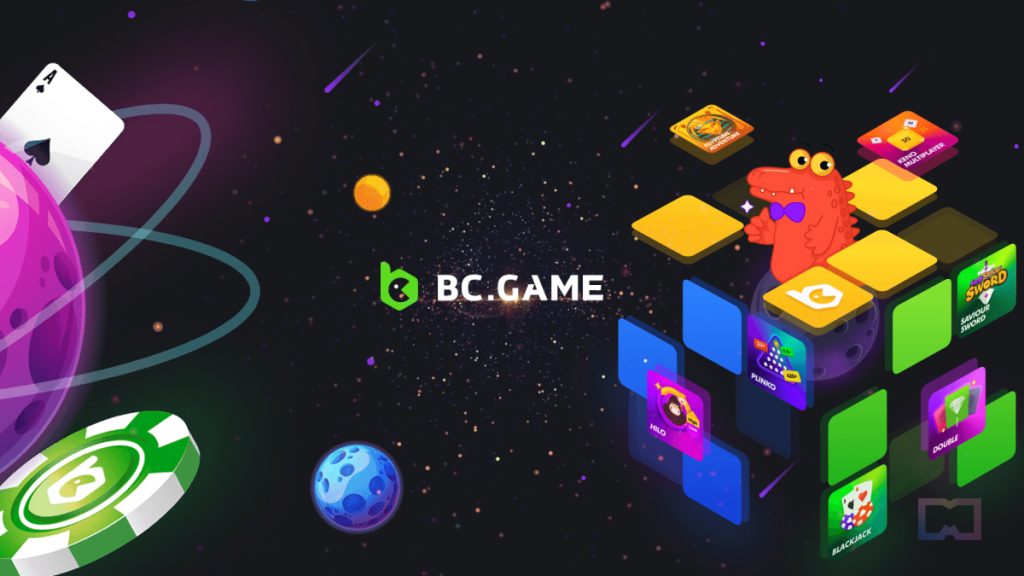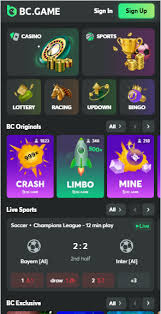Exploring the Mysteries of bc game shitcode
- bcgame4
- Posted by
- Leave your thoughts

Unraveling the Enigma of bc game shitcode
In the ever-evolving world of online gaming, one phrase has caught the attention of enthusiasts and developers alike: bc game shitcode. This intriguing term combines the concepts of ‘blockchain gaming’ with the playful notion of ‘shitcode’, suggesting a mix of high-tech innovation and the chaotic nature often found in indie game development. This article aims to explore what bc game shitcode is, its implications in the gaming ecosystem, and how it resonates with both players and developers.
To fully understand bc game shitcode, we need to break down its components. The term “bc” is a common shorthand for blockchain, a technology revolutionizing many sectors by providing decentralized, transparent, and secure methods of data storage and transaction processing. In the gaming world, blockchain enables players to truly own their in-game assets, which can be traded or sold independently of the game provider. This is a significant shift from traditional gaming models where assets are often controlled exclusively by the developers.
On the other hand, ‘shitcode’ often refers to poorly written code that is functional but lacks efficiency, maintainability, or scalability. It frequently appears in indie game development where rapid prototyping is the priority, resulting in quick-and-dirty solutions that get the game off the ground but may lead to a lack of polish or optimization. Combining these two concepts, bc game shitcode may imply games that utilize blockchain technology but are built using hastily structured coding practices.
The Dual Nature of bc game shitcode
The juxtaposition of ‘bc’ and ‘shitcode’ raises interesting questions about the quality and performance of blockchain games. On one hand, the blockchain can enhance a game’s potential by providing unique features such as provably fair gaming, scarce digital assets, and new monetization methods. On the other hand, games developed hastily with poor coding practices could lead to frustrating user experiences, bugs, and ultimately a loss of trust in the project.
Many projects within the blockchain gaming space fall victim to this duality. Some developers rush to market without proper testing or optimization, leading to an influx of games that might be innovative but are fundamentally flawed. This situation has prompted discussions within the community about the importance of code quality, best practices in development, and the need for more rigorous standards in blockchain gaming.

Why Does bc game shitcode Matter?
Understanding bc game shitcode matters for several reasons. Firstly, it represents the state of the art in a rapidly growing industry. As more gamers and developers turn their attention to blockchain technology, the innovations and pitfalls of this intersection become vital knowledge. Recognizing the potential drawbacks to rushing into blockchain development can help future developers avoid past mistakes.
Secondly, for players, understanding this term can facilitate better decision-making when engaging with new blockchain games. It can serve as a reminder to research projects thoroughly and look for signs of professional coding standards, community feedback, and developer transparency before committing time or money. This is especially important in an industry that still faces skepticism from traditional gaming communities due to the prevalence of poorly executed projects.
Examples of bc game shitcode in the Wild
Numerous games have embraced the blockchain model while simultaneously showcasing what might be described as shitcode. These often include games that have garnered initial popularity due to their unique offerings but later falter due to technical issues. For instance, some early blockchain games experienced overwhelming load times or catastrophic bugs that detracted from the gameplay experience.
A prime example is the initial version of “CryptoKitties,” which allowed players to breed and trade digital cats on the Ethereum blockchain. The game’s success led to network congestion, highlighting inefficiencies in both the code and the scalability of the underlying technology. While the game was fun and innovative, the issues surrounding it demonstrated how quickly shitcode can become a problem when the user base grows.
Moving Forward: Improving bc game shitcode

The gaming community’s response to the challenges posed by bc game shitcode has been a mix of criticism and constructive feedback. Developers are slowly beginning to recognize that quality cannot be sacrificed for speed; innovative ideas must be matched with stable and efficient code. This acknowledgment is leading to a gradual movement towards best practices in blockchain game development.
Developers are encouraged to adopt agile methodologies, implement proper testing protocols, and prioritize user experience as they map out their blockchain projects. Engaging with the community for testing and feedback is invaluable, allowing developers to identify pain points before launching widely. Additionally, education plays a crucial role in fostering a better understanding of both blockchain technology and quality coding practices among new developers entering the industry.
The Future of bc game shitcode
Looking ahead, the future of bc game shitcode appears both promising and complex. The demand for blockchain games is likely to grow, with players becoming more aware of their preferences for transparency and ownership in gaming experiences. However, this growth must be tempered with the understanding that code quality is critical to retaining player trust and ensuring longevity.
As the landscape evolves, we can anticipate a shift where successful developers will lead by example, showcasing that innovative ideas do not need to sacrifice technical integrity. The goal will be to achieve a balance that promotes creativity without compromising the quality, resulting in a more vibrant, engaging, and sustainable gaming ecosystem.
In conclusion, while bc game shitcode may initially seem like a dismissive term, it encapsulates critical conversations surrounding the current state of blockchain gaming. In an industry marked by rapid changes and challenges, understanding this concept allows players and developers alike to navigate the complexities of the gaming landscape more effectively, paving the way for a brighter future in blockchain gaming.

